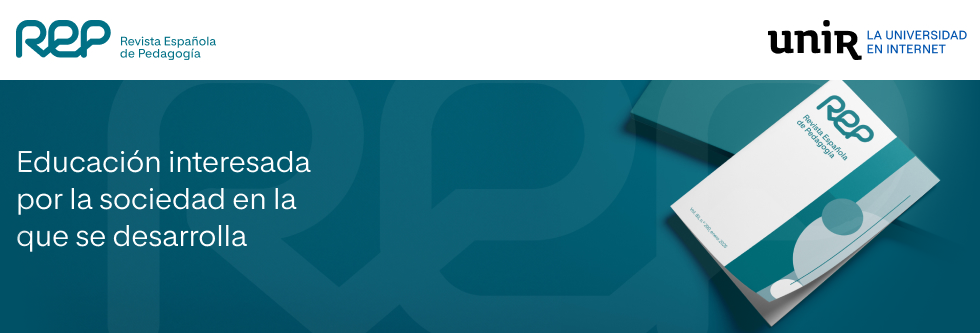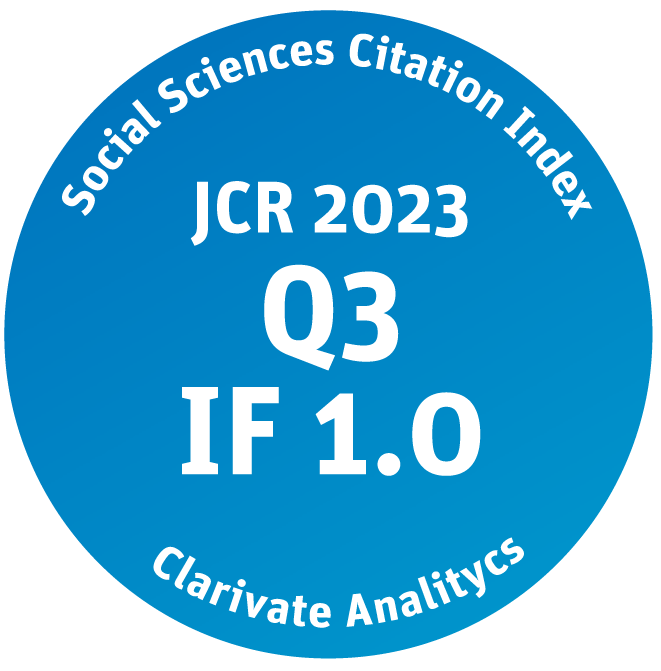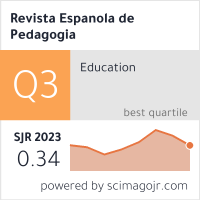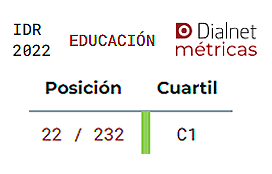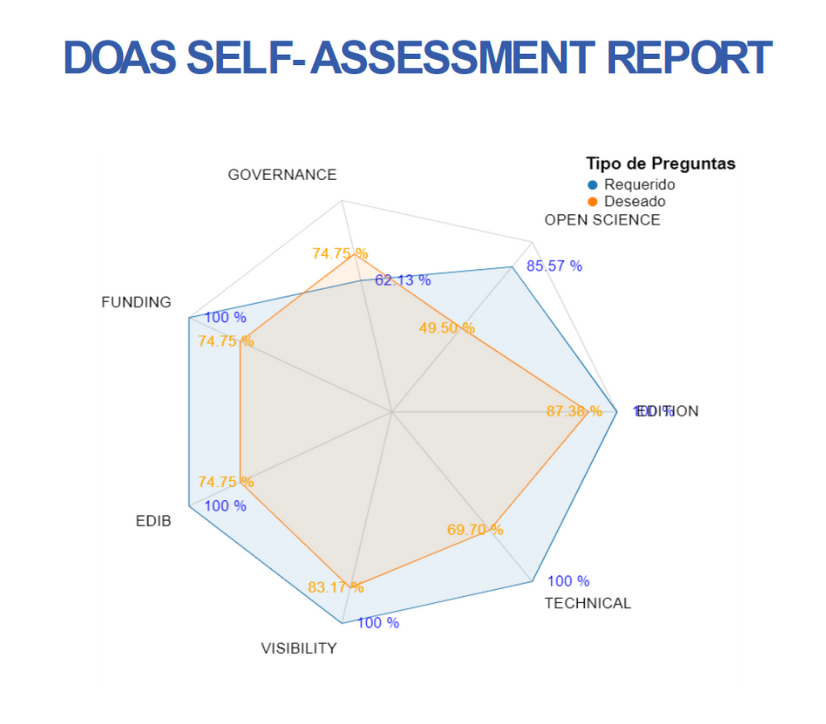The role of pedagogy in one-to-one computing lessons: a quantitative observational study of teacher-student interactions
Resumen
En este estudio comparamos las interacciones entre profesor y alumno en clases tradicionales y en clases que implementan un programa de computación uno a uno, donde todos los alumnos y el profesor tienen una tableta conectada a Internet para usar en el aula. Adoptando un enfoque intrasujeto, hemos usado observaciones de campo cuantitativas para investigar la desviación respecto de las clases tradicionales (sin uso de computadoras). La población del estudio incluyó tres profesoras de inglés de 5.º y 6.º curso. Los hallazgos mostraron que las profesoras cambiaron su manera de enseñar cuando usaron tabletas en su clase, pero cada profesora cambió de manera diferente. Sin embargo, hubo similitudes en el tiempo total empleado en debates de toda la clase y en el tiempo de uso de la computadora. También hallamos que las interacciones son típicas de los tipos de configuración de aprendizaje, con independencia del uso que se le dé a la computadora. Concluimos el artículo con la exposición de los hallazgos, destacando sus implicaciones para la capacitación del profesorado.
Cómo citar este artículo: Hershkovitz, A., Merceron, A. y Shamaly, A. (2019). El papel de la pedagogía en clases con computadoras uno a uno: un estudio observacional cuantitativo de las interacciones profesor-alumno | The role of pedagogy in one-to-one computing lessons: a quantitative observational study of teacher-student interactions. Revista Española de Pedagogía, 77 (274), 487-515. doi: 10.22550/REP77-3-2019-05
Referencias | References
Allen, J., Gregory, A., Mikami, A., Lun, J., Hamre, B. y Pianta, R. (2013). Observations of effective teacher-student interactions in secondary school classrooms: Predicting student achievement with the classroom assessment scoring system-Secondary. School Psychology Review, 42 (1), 76-98.
Baker, R. y Siemens, G. (2014). Educational data mining and learning analytics. En R. K. Sawyer (Ed.), The Cambridge Handbook of the Learning Sciences (pp. 253-272). Cambridge, UK: Cambridge University Press. doi: 10.1017/CBO9781139519526.016
Banerjee, M., Xu, Z., Jiang, L. y Waxman, H. (2017). A Systematic Review of Factors Influencing Technology Use by Pre-service and Novice Teachers. En Society for Information Technology y Teacher Education International Conference (pp. 89-94). Austin, TX: Association for the Advancement of Computing in Education (AACE). Recuperado de https://www.learntechlib.org/primary/p/177279/ (Consultado el 09-07-2019).
Bethel, E. C. (2014). A systematic review of oneto-one access to laptop computing in K-12 Classrooms: An investigation of factors that hnfluence program impact (Tesis doctoral). Concordia University, Montreal, Canadá. Recuperado de https://spectrum.library.concordia.ca/979773/1/Bethel_PhD_S2015.pdf (Consultado el 09-07-2019).
Beutel, D. (2010). The nature of pedagogic teacher-student interactions: A phenomenographic study. The Australian Educational Researcher, 37 (2), 77-91. doi: 10.1007/BF03216923
Birmingham, P., Davies, C. y Greiffenhagen, C. (2002). Turn to face the bard: Making sense of three-way interactions between teacher, pupils and technology in the classroom. Education, Communication y Information, 2 (2-3), 139-161. doi: 10.1080/1463631021000025330
Blau, I., Peled, Y. y Nusan, A. (2016). Technological, pedagogical and content knowledge in oneto-one classroom: teachers developing «digital wisdom». Interactive Learning Environments, 24 (6), 1215-1230. doi: 10.1080/10494820.2014.978792
Brown, C. P., Englehardt, J. y Mathers, H. (2016). Examining preservice teachers’ conceptual and practical understandings of adopting iPads into their teaching of young children. Teaching and Teacher Education, 60, 179-190. doi: 10.1016/J.TATE.2016.08.018
Brownlee, J., Purdie, N. y Boulton-Lewis, G. (2001). Changing Epistemological Beliefs in Pre-service Teacher Education Students. Teaching in Higher Education, 6 (2), 247-268. doi: 10.1080/13562510120045221
Buriel, R. (1983). Teacher-student interactions and their relationship to student achievement: A comparison of Mexican-American and Anglo-American children. Journal of Educational Psychology, 75 (6), 889-897. doi: 10.1037/0022-0663.75.6.889
Burke, P. F., Schuck, S., Aubusson, P., Kearney, M. y Frischknecht, B. (2018). Exploring teacher pedagogy, stages of concern and accessibility as determinants of technology adoption. Technology, Pedagogy and Education, 27 (2), 149-163. doi: 10.1080/1475939X.2017.1387602
Bustamante, C. y Moeller, A. J. (2013). Exploring the Unique Case of a Professional Development Program on Web 2.0 Technologies for Teachers of German. CALICO Journal, 30 (1), 82-104. doi: 10.11139/cj.30.1.82-104
Cameron, D. L. (2014). An examination of teacher-student interactions in inclusive classrooms: teacher interviews and classroom observations. Journal of Research in Special Educational Needs, 14 (4), 264-273. doi: 10.1111/1471-3802.12021
Cardno, C., Tolmie, E. y Howse, J. (2017). New spaces - New pedagogies: Implementing personalized learning in primary school innovative learning environments. Journal of Educational Leadership, Policy and Practice, 32 (1), 111-124.
Central Bureau of Statistics (2017). Characterization and classification of geographical units by the socio-economic level of the population 2013 (report no. 1694). Jerusalén: Central Bureau of Statistics. Recuperado de https://www.cbs.gov.il/en/publications/Pages/2017/Characterization-and-Classification-of-Geographical-Units-by-the-Socio-Economic-Level-of-the-Population-2013.aspx (Consultado el 09-07-2019).
Chen, W. y Looi, C.-K. (2011). Active classroom participation in a Group Scribbles primary science classroom. British Journal of Educational Technology, 42 (4), 676-686. doi: 10.1111/j.1467-8535.2010.01082.x
Chiu, C. F. y Lee, G. C. (2009). A video lecture and lab-based approach for learning of image processing concepts. Computers and Education, 52 (2), 313-323. doi: 10.1016/j.compedu.2008.09.003
Dawson, K., Cavanaugh, C. y Ritzhaupt, A. D. (2008). Florida’s EETT leveraging laptops initiative and its impact on teaching practices. Journal of Research on Technology in Education, 41 (2), 143-159. doi: 10.1080/15391523.2008.10782526
De Melo, G., Machado, A. y Miranda, A. (2017). El impacto en el aprendizaje del programa Una Laptop por Niño. La evidencia de Uruguay. Trimestre Económico, 84 (334), 383-409. doi: 10.20430/ete.v84i334.305
DeFalco, J. A., Rowe, J. P., Paquette, L., Georgoulas-Sherry, V., Brawner, K., Mott, B. W., … Lester, J. C. (2018). Detecting and addressing frustration in a serious game for military training. International Journal of Artificial Intelligence in Education, 28 (2), 152-193. doi: 10.1007/s40593-017-0152-1
Dragon T., Arroyo I., Woolf B. P., Burleson W., el Kaliouby R. y Eydgahi H. (2008). Viewing Student Affect and Learning through Classroom Observation and Physical Sensors. En B. P. Woolf, E. Aïmeur, R. Nkambou y S. Lajoie (Eds.), ITS 2008: Intelligent Tutoring Systems (pp. 29-39). Berlin: Springer. doi: 10.1007/978-3-540-69132-7_8
Drijvers, P., Doorman, M., Boon, P., Reed, H. y Gravemeijer, K. (2010). The teacher and the tool: instrumental orchestrations in the technology-rich mathematics classroom. Educational Studies in Mathematics, 75 (2), 213-234. doi: 10.1007/s10649-010-9254-5
Dündar, H. y Akçayir, M. (2014). Implementing tablet PCs in schools: Students’ attitudes and opinions. Computers in Human Behavior, 32, 40-46. doi: 10.1016/j.chb.2013.11.020
Ertmer, P. A. (2005). Teacher pedagogical beliefs: The final frontier in our quest for technology integration? Educational Technology Research and Development, 53 (4), 25-39. doi: 10.1007/BF02504683
Fleischer, H. (2012). What is our current understanding of one-to-one computer projects: A systematic narrative research review. Educational Research Review, 7 (2), 107-122. doi: 10.1016/j.edurev.2011.11.004
Fleming, S. G. (2016). Gender behavior types, teacher-student interactions, and mathematics performance: An empirical analysis of Texas high school students (Tesis doctoral no publicada). University of Texas Arlington (Arlington, TX). Recuperado de https://rc.library.uta.edu/uta-ir/handle/10106/26379 (Consultado el 10-07-2019).
Flieller, A., Jarlégan, A. y Tazouti, Y. (2016). Who benefits from dyadic teacher-student interactions in whole-class settings? The Journal of Educational Research, 109 (3), 311-324. doi: 10.1080/00220671.2014.950718
García, G. y Montanero, M. (2004). Verbal communication and joint activity in educational support. A comparative analysis among expert. revista española de pedagogía, 62 (229), 541-560.
Gavilán Bouzas, P. (2009). Aprendizaje cooperativo. Papel del conflicto sociocognitivo en el desarrollo intelectual. Consecuencias pedagógicas. revista española de pedagogía, 67 (242), 131-148.
Geiger, V., Faragher, R. y Goos, M. (2010). Cas-enabled technologies as ‘agents provocateurs’ in teaching and learning mathematical modelling in secondary school classrooms. Mathematics Education Research Journal, 22 (2), 48-68. doi: 10.1007/BF03217565
Gomez, K. y Lee, U.-S. (2015). Situated cognition and learning environments: implications for teachers on- and offline in the new digital media age. Interactive Learning Environments, 23 (5), 634-652. doi: 10.1080/10494820.2015.1064447
Good, T. L. y Brophy, J. E. (1970). Teacher-child dyadic interactions: A new method of classroom observation. Journal of School Psychology, 8 (2), 131-138. doi: 10.1016/0022-4405(70)90032-4
Grönlund, Å., Wiklund, M. y Böö, R. (2018). No name, no game: Challenges to use of collaborative digital textbooks. Education and Information Technologies, 23 (3), 1359-1375. doi: 10.1007/s10639-017-9669-z
Gupta, A. y Fisher, D. (2011). Teacher-student interactions in a technology-supported science classroom environment in relation to selected learning outcomes: An Indian study. MIER Journal of Educational Studies Trends y Practices, 1 (1), 41-59. Recuperado de http://www.mierjs.in/ojs/index.php/mjestp/article/viewFile/5/4 (Consultado el 09-07-2019).
Ha, T. Y. (2008). Technology-integrated mathematics education (TIME): A study of interactions between teachers and students in technology-integrated secondary mathematics classrooms (Tesis Doctoral). University of Hawa’I at Mãnoa, Honolulu, EE.UU. Recuperado de https://scholarspace.manoa.hawaii.edu/bitstream/10125/20530/2/HAWN_AC1.H3_5101_r.pdf (Consultado el 09-07-2019).
Hämäläinen, R. y De Wever, B. (2013). Vocational education approach: New TEL settings—new prospects for teachers’ instructional activities? International Journal of Computer-Supported Collaborative Learning, 8 (3), 271-291. doi: 10.1007/s11412-013-9176-1
Han, J., Kamber, M. y Pei, J. (2011). Data mining: Concepts and techniques. Waltham, MA: Elsevier Science.
Harper, B. (2018). Technology and teacher-student interactions: A review of empirical research. Journal of Research on Technology in Education, 50 (3), 214-225.
Hart, L. E. (1989). Classroom processes, sex of student, and confidence in learning mathematics. Journal for Research in Mathematics Education, 20 (3), 242-260.
Hatakka, M., Andersson, A. y Grönlund, Å. (2013). Students’ use of one to one laptops: A capability approach analysis. Information Technology and People, 26 (1), 94-112. doi: 10.1108/09593841311307169
Hershkovitz, A. (2018). The student-teacher relationship in the one-to-one computing classroom. Páginas de Educación, 11 (1), 37-65.
Hershkovitz, A. y Bransi, H. (2019). Teachers' perceptions of classroom environment in one-toone computing lessons. Revista de Educación, 384, 147-173.
Hershkovitz, A. y Karni, O. (2018). Borders of change: A holistic exploration of teaching in one-to-one computing programs. Computers y Education, 125, 429-443.
Hershkovitz, A., Merceron, A. y Shamaly, A. (2015). Teacher-student classroom interactions: A computational approach. En Proceedings of the 8th International Conference on Educational Data Mining (pp. 558-559). Recuperado de http://www.educationaldatamining.org/EDM2015/proceedings/edm2015_proceedings.pdf (Consultado el 09-07-2019).
Higgins, K. y BuShell, S. (2018). The effects on the student-teacher relationship in a one-to-one technology classroom. Education and Information Technologies, 23 (3), 1069-1089. doi: 10.1007/s10639-017-9648-4
Houen, S., Danby, S., Farrell, A. y Thorpe, K. (2016). ‘I wonder what you know…’ teachers designing requests for factual information. Teaching and Teacher Education, 59, 68-78. doi: 10.1016/J.TATE.2016.02.002
Hu, W. (4 de mayo de 2007). Seeing no progress, some schools drop laptops. The New York Times. Recuperado de http://www.nytimes.com/2007/05/04/education/04laptop.html (Consultado el 09-07-2019).
Hu, B. Y., Fan, X., Wu, Z., LoCasale-Crouch, J., Yang, N. y Zhang, J. (2017). Teacher-child interactions and children’s cognitive and social skills in Chinese preschool classrooms. Children and Youth Services Review, 79, 78-86. doi: 10.1016/J.CHILDYOUTH.2017.05.028
Islam, M. S. y Grönlund, Å. (2016). An international literature review of 1:1 computing in schools. Journal of Educational Change, 17 (2), 191-222. doi: 10.1007/s10833-016-9271-y
Jääskelä, P., Häkkinen, P. y Rasku-Puttonen, H. (2017). Teacher beliefs regarding learning, pedagogy, and the use of technology in higher education. Journal of Research on Technology in Education, 49 (3-4), 198-211. doi: 10.1080/15391523.2017.1343691
Jan, J., Kamber, M. y Pei, J. (2001). Data mining: Concepts and techniques. Waltham, MA: Elsevier. Jenni, R. y Mikko, V. (2013). Actual and potential pedagogical use of tablets in schools. Human Technology, 9 (2), 113-131. doi: 10.17011/ht/urn.201312042736
Jones, M. G. y Vesilind, E. (1994). Changes in student teachers’ interactions with pupils. The Journal of Classroom Interaction, 29 (1), 25-29.
Kienhues, D., Bromme, R. y Stahl, E. (2008). Changing epistemological beliefs: The unexpected impact of a short-term intervention. British Journal of Educational Psychology, 78 (4), 545-565. doi: 10.1348/000709907X268589
Kirk, R. E. (2007). Statistics: An introduction. Boston, MA: Wadsworth Publishing Company.
Koh, J. H. L. y Frick, T. W. (2009). Instructor and student classroom interactions during technology skills instruction for facilitating preservice teachers’ computer self-efficacy. Journal of Educational Computing Research, 40 (2), 21-228. doi: 10.2190/EC.40.2.d
Kong, S. C. (2011). An evaluation study of the use of a cognitive tool in a one-to-one classroom for promoting classroom-based dialogic interaction. Computers y Education, 57 (3), 1851-1864. doi: 10.1016/J.COMPEDU.2011.04.008
Lee, J. K., Spires, H., Wiebe, E., Hollebrands, K. y Young, C. (2015). Portraits of One-To-One Learning Environments in a New Learning Ecology. International Journal of Learning, Teaching and Educational Research, 10 (3), 78-101.
Leeuwen, C. A. y Gabriel, M. A. (2007). Beginning to write with word processing: Integrating writing process and technology in a primary classroom. The Reading Teacher, 60 (5), 420-429. doi: 10.1598/RT.60.5.2
Ley, K. y Gannon-Cook, R. (2014). Learner-valued interactions: Research into practice. Quarterly Review of Distance Education, 15 (1), 23-32.
Li, W., Burton, J. K., Lockee, B. B. y Potter, K. R. (2015). Development of a framework for guiding interaction design in distance learning (Tesis doctoral). Virginia Polytechnic Institute and State University, Blacksburg, EE.UU. Recuperado de https://vtechworks.lib.vt.edu/bitstream/handle/10919/64400/Li_W_D_2015.pdf?sequence=1yisAllowed=y (Consultado el 09-07-2019).
Lin, J. M.-C., Wang, P.-Y. y Lin, I.-C. (2012). Pedagogy * technology: A two-dimensional model for teachers’ ICT integration. British Journal of Educational Technology, 43 (1), 97-108. doi: 10.1111/j.1467-8535.2010.01159.x
Lowther, D. L., Inan, F. A., Ross, S. M. y Strahl, J. D. (2012). Do one-to-one initiatives bridge the way to 21st century knowledge and skills? Journal of Educational Computing Research, 46 (1), 1-30. Recuperado de https://eric.ed.gov/?id=EJ965342 (Consultado el 09-07-2019).
Luckner, A. E., & Pianta, R. C. (2011). Teacher-student interactions in fifth grade classrooms: Relations with children’s peer behavior. Journal of Applied Developmental Psychology, 32 (5), 257-266. doi: 10.1016/J.APPDEV.2011.02.010
Malmberg, L. (2018). Métodos cuantitativos para el registro de procesos y contextos en la investigación educativa | Quantitative methods for capturing processes and contexts in educational research. revista española de pedagogía, 76 (271), 449-462. doi: 10.22550/REP76-3-2018-03
Mason, J. (2014). Interactions between teacher, student, software and mathematics: Getting a purchase on learning with technology. En A. Clark-Wilson, O. Robutti y N. Sinclair (Eds.), The mathematics teacher in the digital era, volume 2 (pp. 11-40). Dordrecht: Springer. doi: 10.1007/978-94-007-4638-1_2
Matzen, N. J. y Edmunds, J. A. (2007). Technology as a Catalyst for Change. Journal of Research on Technology in Education, 39 (4), 417-430. doi: 10.1080/15391523.2007.10782490
Maxwell, A. L. (2015). The impact of one-to-one laptop initiatives on K-12 math and science pedagogy and achievement: A literature review (Tesis de maestría). The University of Texas at Austin, Austin, EE.UU. Recuperado de https://repositories.lib.utexas.edu/bitstream/handle/2152/32278/MAXWELL-MASTERSREPORT-2015.pdf?sequence=1 (Consultado el 09-07-2019).
Miller, R. (2008). Laptop educators: Identifying laptop use and pedagogical change. En Proceedings of Society for Information Technology y Teacher Education International Conference 2008 (pp. 1211-1216). Chesapeake, VA: AACE.
Minsu Jang, Dae-Ha Lee, Jaehong Kim y Youngjo Cho. (2013). Identifying principal social signals in private student-teacher interactions for robot-enhanced education. En 2013 IEEE RO-MAN (pp. 621-626). doi: 10.1109/ROMAN.2013.6628417
Ocumpaugh, J., Baker, R., Gowda, S., Heffernan, N. y Heffernan, C. (2014). Population validity for educational data mining models: A case study in affect detection. British Journal of Educa tional Technology, 45 (3), 487-501. doi: 10.1111/bjet.12156
Oliver, K. M. y Corn, J. O. (2008). Student-reported differences in technology use and skills after the implementation of one-toone computing. Educational Media International, 45 (3), 215-229. doi: 10.1080/09523980802284333
Papadakis, S., Kalogiannakis, M. y Zaranis, N. (2018). The effectiveness of computer and tablet assisted intervention in early childhood students’ understanding of numbers: An empirical study conducted in Greece. Education and Information Technologies. doi: 10.1007/s10639-018-9693-7
Paul, J. A. y Cochran, J. D. (2013). Key interactions for online programs between faculty, students, technologies, and educational institutions: A holistic framework. Quarterly Review of Distance Education, 14 (1), 49-62. Recuperado de https://search.proquest.com/docview/1373183112/fulltextPDF/48BFB25E58104164PQ/1?accountid=14765 (Consultado el 09-07-2019).
Pennings, H. J. M., van Tartwijk, J., Wubbels, T., Claessens, L. C. A., van der Want, A. C. y Brekelmans, M. (2014). Real-time teacher-student interactions: A dynamic systems approach. Teaching and Teacher Education, 37, 183-193. doi: 10.1016/J.TATE.2013.07.016
Penuel, W. R. (2006). Implementation and effects of one-to-one computing initiatives: A research synthesis. Journal of Research on Technology in Education, 38 (3), 329-348. doi: 10.1080/15391523.2006.10782463
Peña-Ayala, A. (2014). Educational data mining: A survey and a data mining-based analysis of recent works. Expert Systems with Applications, 41 (4), 1432-1462. doi: 10.1016/J.ESWA.2013.08.042
Pettigrew, J., Miller-Day, M., Shin, Y., Hecht, M. L., Krieger, J. L. y Graham, J. W. (2013). Describing teacher-student interactions: A qualitative assessment of teacher implementation of the 7th grade Keepin’ it REAL substance use intervention. American Journal of Community Psychology, 51 (1-2), 43-56. doi: 10.1007/s10464-012-9539-1
Psiropoulos, D., Barr, S., Eriksson, C., Fletcher, S., Hargis, J. y Cavanaugh, C. (2016). Professional development for iPad integration in general education: Staying ahead of the curve. Education and Information Technologies, 21 (1), 209-228. doi: 10.1007/s10639-014-9316-x
Quinlan, J. R. (1986). Induction of decision trees. Machine Learning, 1 (1), 81-106. doi: 10.1007/BF00116251
Raca, M. y Dillenbourg, P. (2014). Holistic analysis of the classroom. En Proceedings of the 2014 ACM workshop on Multimodal Learning Analytics Workshop and Grand Challenge - MLA ’14 (pp. 13-20). Nueva York, EE. UU.: ACM Press. doi: 10.1145/2666633.2666636
Reyes, L. H. y Fennema, E. (1981). Classroom processes observer manual. Madison, EE.UU.: University of Wisconsin-Madison. Recuperado de http://link.library.in.gov/portal/Classroom-processes-observer-manual-Laurie/U8X6y1QABIU (Consultado el 09-07-2019).
Richardson, J. W., McLeod, S., Flora, K., Sauers, N. J., Kannan, S. y Sincar, M. (2013). Large-scale 1:1 computing initiatives: An open access database. International Journal of Education and Development Using Information and Communication Technology, 9 (1), 4-18. Recuperado de http://ijedict.dec.uwi.edu/viewissue.php?id=34 (Consultado el 09-07-2019).
Romero, C. y Ventura, S. (2010). Educational data mining: A review of the state of the art. IEEE Transactions on Systems, Man, and Cybernetics, Part C (Applications and Reviews), 40 (6), 601-618. doi: 10.1109/TSMCC.2010.2053532
Rosen, Y. y Beck-Hill, D. (2012). Intertwining Digital Content and a One-To-One Laptop Environment in Teaching and Learning. Journal of Research on Technology in Education, 44 (3), 225-241. doi: 10.1080/15391523.2012.10782588
Rudasill, K. M. (2011). Child temperament, teacher-child interactions, and teacher-child relationships: A longitudinal investigation from first to third grade. Early Childhood Research Quarterly, 26 (2), 147-156. doi: 10.1016/j.ecresq.2010.07.002
Semenova, L. A., Kazantseva, A. I., Sergeyeva, V. V, Raklova, Y. M. y Baiseitova, Z. B. (2016). Pedagogical interaction in high school, the structural and functional model of pedagogical interaction. International Journal of Environmental y Science Education, 11 (9), 2553-2566. doi: 10.12973/ijese.2016.706a
Spires, H. A., Oliver, K. y Corn, J. (2011). The new learning ecology of one-to-one computing environments: Preparing teachers for shifting dynamics and relationships. Journal of Digital Learning in Teacher Education, 28 (2), 63-72. doi: 10.1080/21532974.2011.10784682
Swallow, M. (2015). The year-two decline: Exploring the incremental experiences of a 1:1 technology initiative. Journal of Research on Technology in Education, 47 (2), 122-137. doi: 10.1080/15391523.2015.999641
Tabach, M. (2011). A mathematics teacher’s practice in a technological environment: A case study analysis using two complementary theories. Technology, Knowledge and Learning, 16 (3), 247-265. Recuperado de https://www.learntechlib.org/p/110557 (Consultado el 09-07-2019).
Tabach, M. (2013). Developing a general framework for instrumental orchestration. Recuperado de http://www.cerme8.metu.edu.tr/wgpapers/WG15/WG15_Tabach.pdf (Consultado el 09-07-2019).
Thomas, C. y Jayagopi, D. B. (2017). Predicting student engagement in classrooms using facial behavioral cues. En Proceedings of the 1st ACM SIGCHI International Workshop on Multimodal Interaction for Education (pp. 33-40). Nueva York: Association for Computing Machinery. doi: 10.1145/3139513.3139514
Tolboom, J. L. J. (2012). The potential of a classroom network to support teacher feedback: a study in statistics education (Tesis doctoral). University of Groningen, Groningen, Países Bajos. Recuperado de https://www.rug.nl/research/portal/publications/the-potential-of-a-classroom-network-to-support-teacher-feedback(8e4d-6bee-e4b7-47e8-ac80-e724e5b1aabe)/export.html (Consultado el 09-07-2019).
Tondeur, J., van Braak, J., Ertmer, P. A. y Ottenbreit-Leftwich, A. (2017). Understanding the relationship between teachers’ pedagogical beliefs and technology use in education: a systematic review of qualitative evidence. Educational Technology Research and Development, 65 (3), 555-575. doi: 10.1007/s11423-016-9481-2
Twining, P., Raffaghelli, J., Albion, P. y Knezek, D. (2013). Moving education into the digital age: the contribution of teachers’ professional development. Journal of Computer Assisted Learning, 29 (5), 426-437. doi: 10.1111/jcal.12031
Vandenbroucke, L., Spilt, J., Verschueren, K., Piccinin, C. y Baeyens, D. (2018). The classroom as a developmental context for cognitive development: A meta-analysis on the importance of teacher-student interactions for children’s executive functions. Review of Educational Research, 88 (1), 125-164. doi: 10.3102/0034654317743200
Varier, D., Dumke, E. K., Abrams, L. M., Conklin, S. B., Barnes, J. S. y Hoover, N. R. (2017). Potential of one-to-one technologies in the classroom: teachers and students weigh in. Educational Technology Research and Development, 65 (4), 967-992. doi: 10.1007/s11423-017-9509-2
Wang, M. (2017). The impact of teacher-student classroom interactions in primary school environment on children’s engagement in classroom: A systematic literature review (Tesis de maestría). Jönköping University, Jönköping, Sweden.
Watson, G. (2001). Models of information technology teacher professional development that engage with teachers’ hearts and minds. Journal of Information Technology for Teacher Education, 10 (1-2), 179-190. doi: 10.1080/14759390100200110
Yang, K.-T., Wang, T.-H. y Chiu, C. M.-H. (2015). Study the effectiveness of technology-enhanced interactive teaching environment on student learning of junior high school biology. Eurasia Journal of Mathematics, Science and Technology Education, 11 (3), 263-275. doi: 10.12973/eurasia.2015.1327a
Zheng, B., Warschauer, M., Lin, C.-H. y Chang, C. (2016). Learning in one-to-one laptop environments: A meta-analysis and research synthesis. Review of Educational Research, 86 (4), 1052-1084. doi: 10.3102/0034654316628645
Citación recomendada | Recommended citation
Hershkovitz, A.,
Merceron, A.,
&
Shamaly, A.
(2019)
.
El papel de la pedagogía en clases con computadoras uno a uno: un estudio observacional cuantitativo de las interacciones profesor-alumno.
Revista Española de Pedagogía, 77(274).
https://www.revistadepedagogia.org/rep/vol77/iss274/6
Licencia Creative Commons | Creative Commons License
Esta obra está bajo una licencia internacional Creative Commons Atribución-NoComercial 4.0.
This work is licensed under a Creative Commons Attribution-NonCommercial 4.0 International License
Palabras clave | Keywords
enseñanzamejoradamediantetecnología, interaccionesprofesor-alumno, observacionesdecampocuantitativas, programadecomputaciónunoauno
